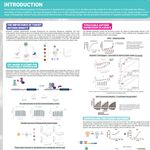Keynote Presentation: Bridging Multiscale Physiological Systems via Microfluidics- from single cell to tissue-scale to organ-scale
-
Abraham P. Lee
Professor, Biomedical Engineering, University of California, Irvine Director, NSF I/UCRC Center for Advanced Design & Manufacturing of Integrated Microfluidics (CADMIM), Lab On A Chip JournalBIOGRAPHY
Precision medicine is the paradigm to develop treatments for patients based on molecular-targets that are effective in vivo when administered. In addition to identifying the molecular and cellular targets that are the source of disease, it is also critical to understand how these targets behave in the body based on physiological principles. Recent developments in microfluidics have contributed to burgeoning precision medicine fields such as liquid biopsy, immunotherapy, single cell analysis, genotyping and gene sequencing, and microphysiological systems. The fact that microfluidics bridges the scales of molecular, cellular, tissue, and can even recapitulate organ and circulatory functions of the body enables a microprocessor for a plethora of health indicators. In liquid biopsy, microfluidics can analyze biological samples such as blood for the detection of biomolecules or cells that are indicative of disease or physiological state. Our microfluidic platform, the lateral cavity acoustic transducers (LCAT) can process a drop of blood to 1) sort undiluted donor whole blood into its cellular subsets (plasma, RBCs, and WBCs), 2) enrich and retrieve spiked breast cancer cells at rare cell relevant concentrations (10 per mL), and 3) on-chip immunofluorescent label specific target cellular populations by their known marker expression patterns. The ultimate goal is to develop a comprehensive panel that can provide a holistic representation of the body’s health status, including molecular and cellular readout that indicate infections, immune status, metabolic status, gene expressions, and cytokine levels. Furthermore, recent developments in cell therapies requires new approaches towards engineering cells without the complications and limitations of viral vectors. I will present a five-step protein array assay in which HIV, HPV and HSV reactive antibodies from both serum and saliva were rapidly detected by an integrated, rapid and simple-to-use multiplexed microfluidic device. Another example I will present is a 3-D vascularized micro organ (VMO) system connects microfluidic channels to vascularized tissues, forming the basis of the “human body on-chip”. Applications for this platform include microphysiological systems for screening of drugs, studying vascular malformations, and understanding immune responses. Ultimately this on-chip microcirculation platform maintains ‘microfluidic homeostasis’ for studying bottom up treatment options.
Learning Objectives:
1. Identify the potential for microfluidic devices for multi-scale processing of blood components
2. Describe the approaches for microfluidics to tap into the current cellular and immuno- therapies
3. Explain the importance of vasculature for microphysiological systems
Please update your information
Certificate of Attendance
DOWNLOAD CERTIFICATE




